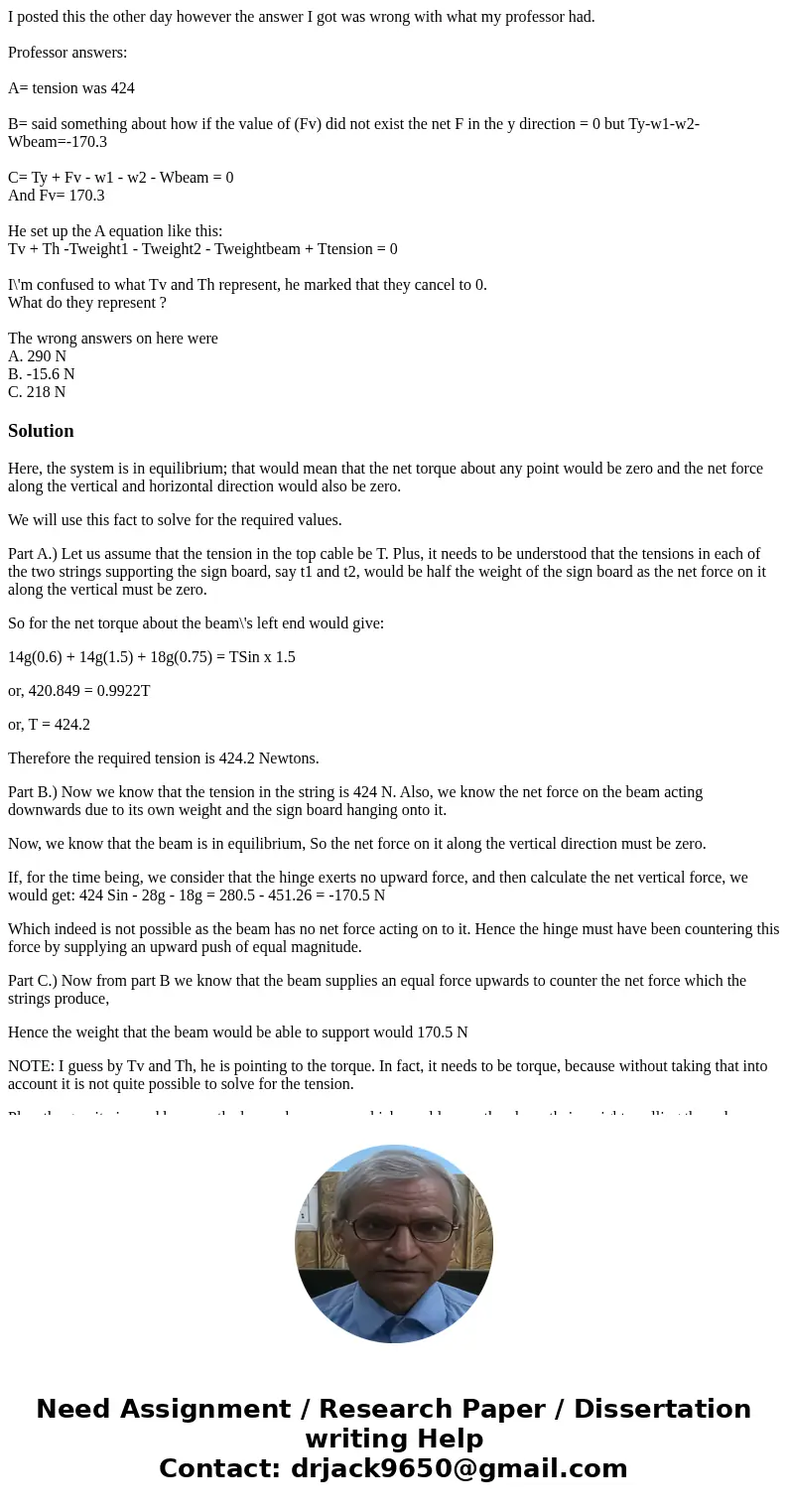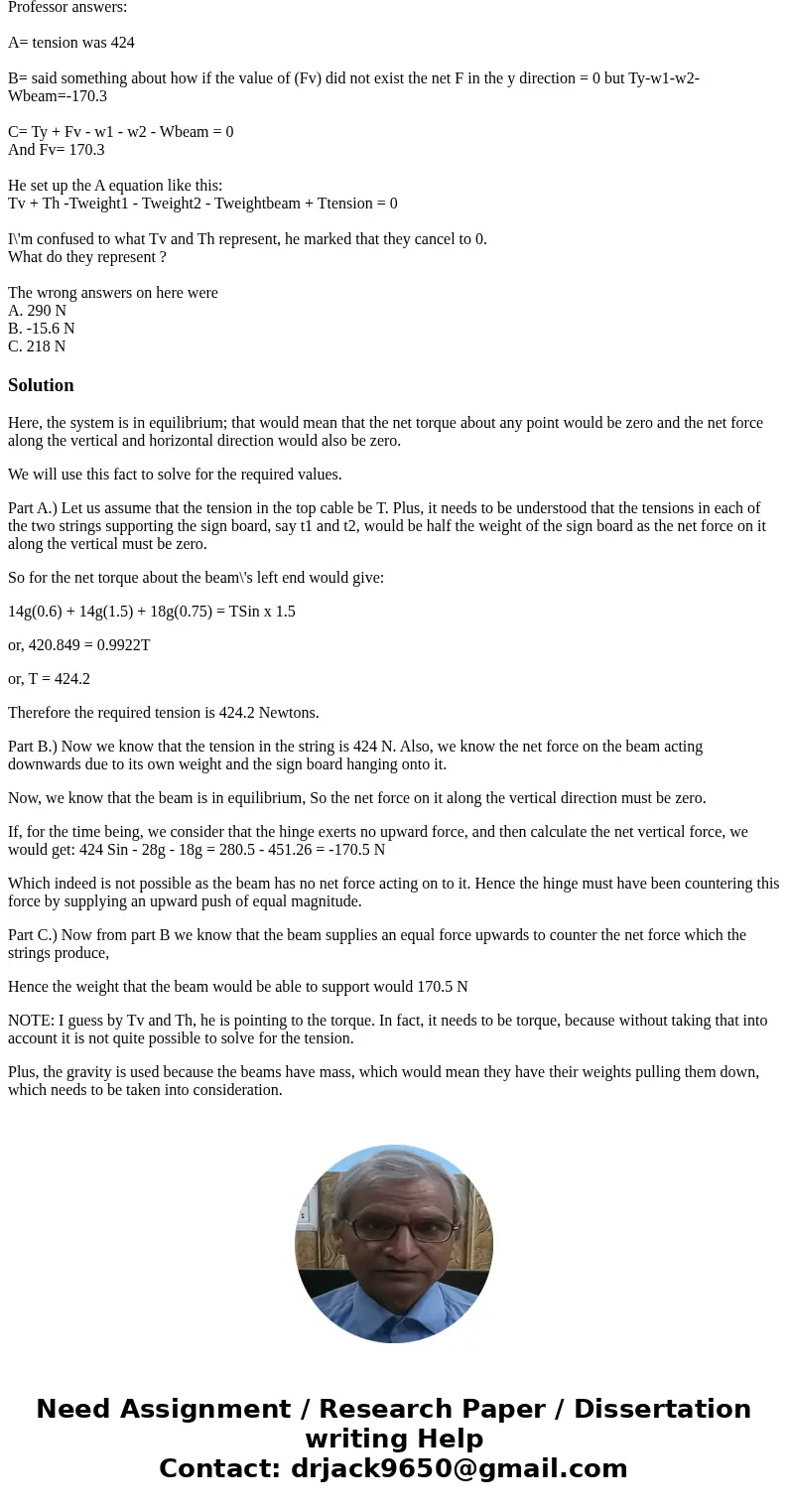I posted this the other day however the answer I got was wro
Solution
Here, the system is in equilibrium; that would mean that the net torque about any point would be zero and the net force along the vertical and horizontal direction would also be zero.
We will use this fact to solve for the required values.
Part A.) Let us assume that the tension in the top cable be T. Plus, it needs to be understood that the tensions in each of the two strings supporting the sign board, say t1 and t2, would be half the weight of the sign board as the net force on it along the vertical must be zero.
So for the net torque about the beam\'s left end would give:
14g(0.6) + 14g(1.5) + 18g(0.75) = TSin x 1.5
or, 420.849 = 0.9922T
or, T = 424.2
Therefore the required tension is 424.2 Newtons.
Part B.) Now we know that the tension in the string is 424 N. Also, we know the net force on the beam acting downwards due to its own weight and the sign board hanging onto it.
Now, we know that the beam is in equilibrium, So the net force on it along the vertical direction must be zero.
If, for the time being, we consider that the hinge exerts no upward force, and then calculate the net vertical force, we would get: 424 Sin - 28g - 18g = 280.5 - 451.26 = -170.5 N
Which indeed is not possible as the beam has no net force acting on to it. Hence the hinge must have been countering this force by supplying an upward push of equal magnitude.
Part C.) Now from part B we know that the beam supplies an equal force upwards to counter the net force which the strings produce,
Hence the weight that the beam would be able to support would 170.5 N
NOTE: I guess by Tv and Th, he is pointing to the torque. In fact, it needs to be torque, because without taking that into account it is not quite possible to solve for the tension.
Plus, the gravity is used because the beams have mass, which would mean they have their weights pulling them down, which needs to be taken into consideration.


 Homework Sourse
Homework Sourse